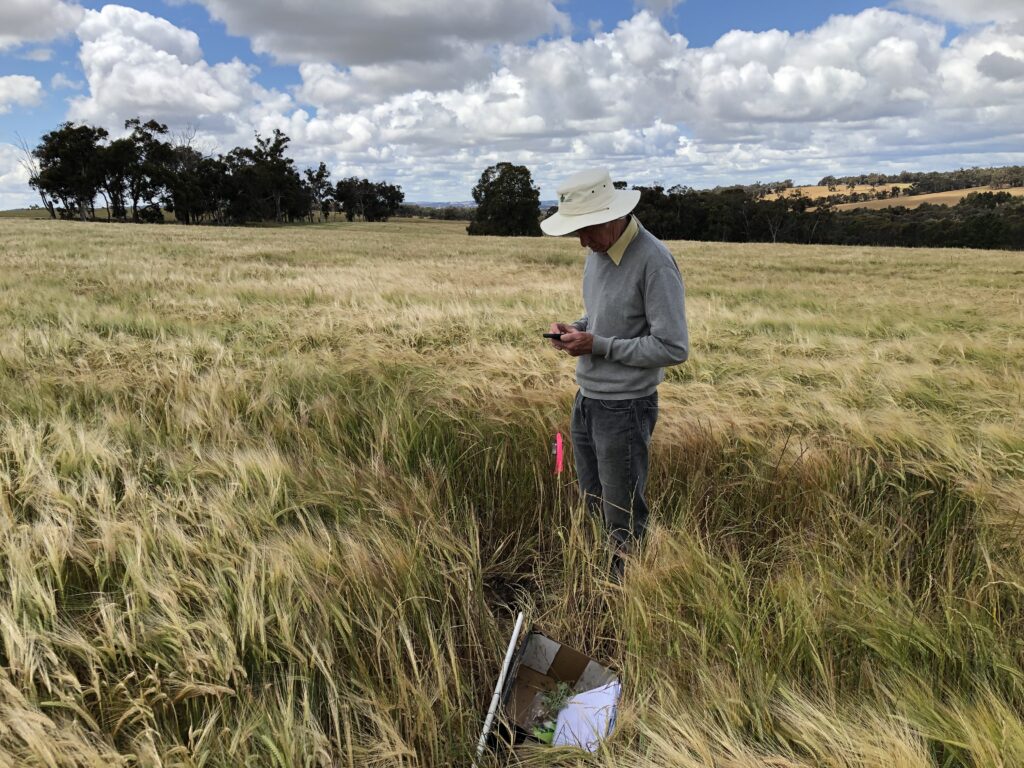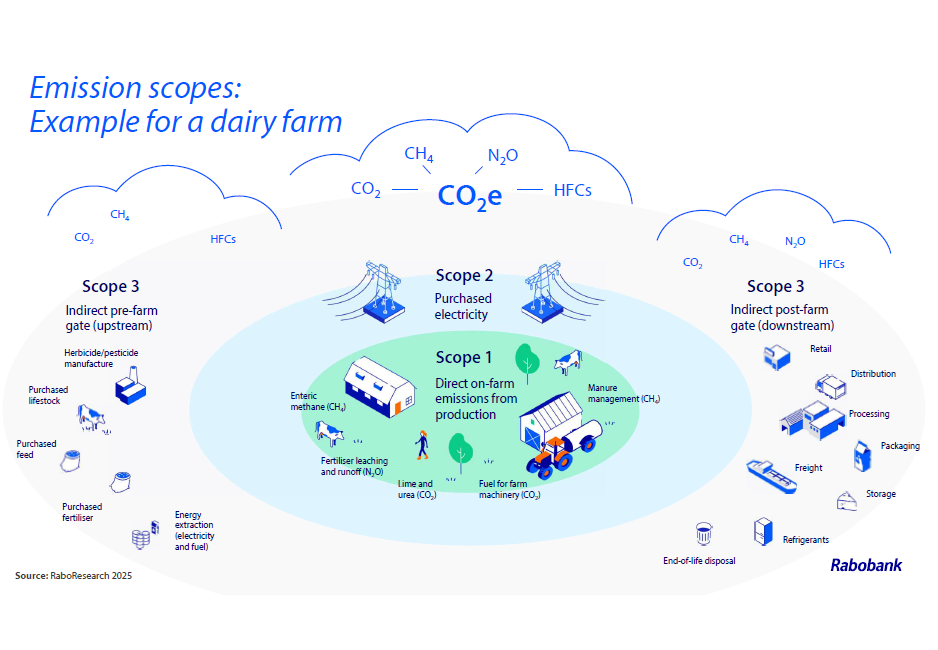
The Western Dairy Innovation Day was held this month at Grant and Nikki Evans’ farm in Jindong.
Tanisha Shields from Rabobank presented on carbon accounting and addressed the question:
“How will this affect my business?”
The answer really comes down to market accessibility, particularly for those selling into international markets.
Knowing your annual carbon emissions could become a requirement for selling into the main supply channels in Australia and overseas.
Carbon accounting calculates all the emissions sources that exist in your business, minus any measured sequestration that may be occurring in your trees and soils as recorded in a certified scheme.
This gives you your net farm business emissions for your business. Carbon emissions sources are broken down into Scope 1, Scope 2 and Scope 3.
- Scope 1: The direct emissions occurring on your farm like the methane produced by your cows and manure ponds.
- Scope 2: Purchase of electricity.
- Scope 3: The pre-farm gate emissions you buy in (Carbon accounting attached to the cows you purchase, your fertiliser and herbicides.)

Why are you hearing more and more about carbon accounting?
From January 1 this year, large businesses had to begin preparing mandatory sustainability reports on “climate related financial disclosures”.
So big businesses now have new reporting requirements when it comes to the climate impacts of their business.
Included in this reporting is emission reductions targets. Tanisha used Rabobank as an example:
“Rabobank’s global target is to be “Net Zero” by 2050 under their commitment to the Paris Agreement,” she said.
“In Australian Dairy, Rabobank’s target is a 12% reduction in emissions intensity (emission produced per unit of product) by 2030.”
Farm produce is a “Scope 3” component for the rest of your supply chain.
So for example, companies like Coles will very likely buy milk from the farmers with the lowest emissions per litre produced.
Knowing your number will be essential to your buyers needing to do their due diligence, and a lower number will create benefits when negotiating market access.
While calculating your emissions might sound like a burden, Tanisha said that generally, the most profitable businesses were also the most carbon efficient.
This sentiment was echoed by agri-business consultant Richard Brake who also presented at Dairy Innovation Day.
“When I’m working with agricultural businesses, the target is not to reduce emissions, it’s to improve productivity,” he said.
“If we improve productivity your emissions [intensity] comes down naturally.
“If you are a low emitter, you have value to your supply chain and the bank.”
While the mandatory sustainability reporting is only enforced for big companies at the moment, it may affect your farm in the near future.
If you would like to start looking at carbon accounting on your farm here are some helpful links:
- Carbon Farming Outreach Program training package with Department of Climate Change, Energy, the Environment and Water
- A farmer’s handbook to on-farm carbon management with AgriFutures
Glossary
Carbon accounting: Carbon accounting is the process of measuring how much carbon dioxide equivalents (CO2e) an organisation (company, state, etc.) emits
Carbon dioxide equivalents (CO2e): A standardised metric used to compare the global warming potential of different greenhouse gases by converting them to the equivalent amount of carbon dioxide. Each greenhouse gas has different warming potential so this is accounted for by expressing as CO2 equivalent.
Carbon emissions: Refer to greenhouse gas emissions, and are measured in terms of carbon dioxide equivalent.
Emissions intensity: Emissions produced per unit of activity, like emissions per litre of milk produced.
Net Zero: A state in which the amount of greenhouse gases emitted into the atmosphere is counterbalanced by removing an equivalent amount of greenhouse gases.
Paris Agreement: An international treaty on climate change, adopted in 2015 and ratified by almost every country in the world. The Agreement commits its signatories to keep global warming to well below 2°C above pre-Industrial levels, and preferably limiting the increase to 1.5°C.
South West NRM is the Bunbury Node of the South-West WA Drought Resilience Adoption and Innovation Hub and receives funding from the Australian Government’s Future Drought Fund.
The WaterSmart Dams project is jointly funded through the Australian Government’s Future Drought Fund and the Western Australian state government’s Agriculture Climate Resilience Fund, supported by the Department of Primary Industries and Regional Development (DPIRD).
